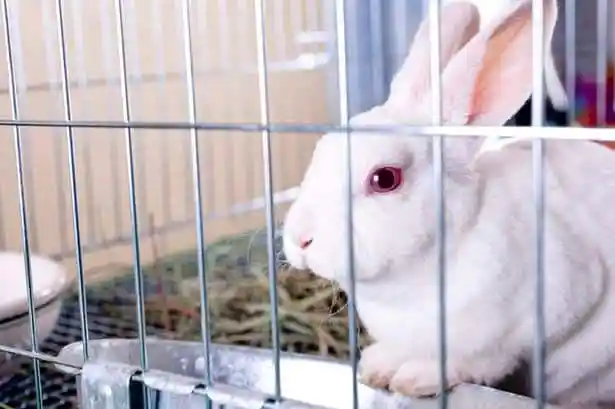Rabbit farming is more convenient and profitable than farming in most other animals because rabbits often give birth to large litters, and their offspring grow fast and reach market or breeding weight more quickly than many other species. Rabbit farming does not require large amounts of space compared with most other animals, and they are generally quiet and easy to manage and handle.
A female rabbit is called a doe, while a male rabbit is called a buck. Starting with just two does and one buck, within one year you could have 40 rabbits or more. If you start with 10 does and 1 buck, within a year your stock would be over 200 rabbits or more, by which time you would already have a steady income.
Benefits of rearing rabbits
The biggest advantage of rabbit farming is that rabbit meat tastes sweeter than a mixture of chicken and bush meat, making it a choice meat for some homes and restaurants as it commands a higher cost per kg of live weight when compared to other animals.
In addition to that, almost all parts of the rabbit turn into money for an informed farmer, which means there are many sources through which farmers can make money in the rabbit industry, which includes the following: consumption, fur production, production of manure, as pets, and for research purposes.
Proper feed for rabbits
Rabbits are herbivores, which means they eat plants; meanwhile, to enable fast growth and development, commercial rabbit farms supply their rabbits with compounded feeds. Rabbits can be fed with soft vegetables and fruits, such as elephant grass, potatoes, shrubs, leaves, and herbs.
How to Start Rabbit Farming
Starting and running a rabbit breeding business is not all that expensive, but one still needs to do everything possible to minimize costs in such a way that it will not affect profits. Before buying rabbits, it is important to decide on their housing—the type of cage, size, and position. You can start raising rabbits in either a deep litter or a cage.
Production
Rabbit farming is more convenient and profitable than farming most other animals because it requires little capital and a small space to begin with, and it is a very prolific animal.
A mature rabbit begins breeding from five to seven months of age, while the gestation period for a female rabbit (the doe) is 31 days, and she normally gives birth to five to about ten kits (baby rabbits) at once.
How to Start a Successful Sheep Farming Business
Because the lactating period lasts two months, the total duration for a reproduction circle is three months; thus, a rabbit can reproduce four times per year. One mature buck (male rabbit) can successfully cross ten does (female rabbit).
Production cost and Return on Investment
Depending on the breed and location, the average cost of one breeding buck is now #8000 while a female is now sold for about #10000. Since a mature buck is enough for 10 does, the total cost of purchasing one male animal and ten female animals =#75,000.
The cost of feeding depends on whether they are fed concentrate or grass alone. It is advisable to give both grass and compounded feed containing all classes of feed in order to get the best result from rabbit farming.
A mature rabbit will consume 80 grams of feed per day to give about 2.5kg of feed per month, while a young rabbit will consume an average of 3.5kg of feed to give 1 kg of meat, which means a rabbit will consume about 10 kg of feed in six months to reach maturity weight of 3 kg.
It is best to sell your rabbit for breeding than for slaughtering because live weight is now #2000 per kg, which means a rabbit weighing 3kg would be sold for an average of #6000 for live weight, irrespective of sex and breed.
Creating Wealth Through Pig Farming
The cost of rabbit feed per kg is now #200 therefore, the cost of feeding one adult rabbit per month is #500, #6000 per year, and #66,000 for 11 adult animals containing 1 male and 10 females.
If one female produces an average of 6 kits per production cycle, it means 60 kits would be produced four times in a year for a total of 240 kits. Since each animal would consume 10kg in six months, the cost of feeding one kit to maturity for six months is #2000, while producing 240 animals would cost #48,000.
So the total cost of feed for a farm of 1 buck and 10 does that are producing 240 kits per year is = #66,000 + #48,000 to give #114,000. Selling 240 kits at #6000 per one (slaughter price) =1,440,000
This analysis implies that rabbit farming is a highly profitable sector of agriculture to venture into.



